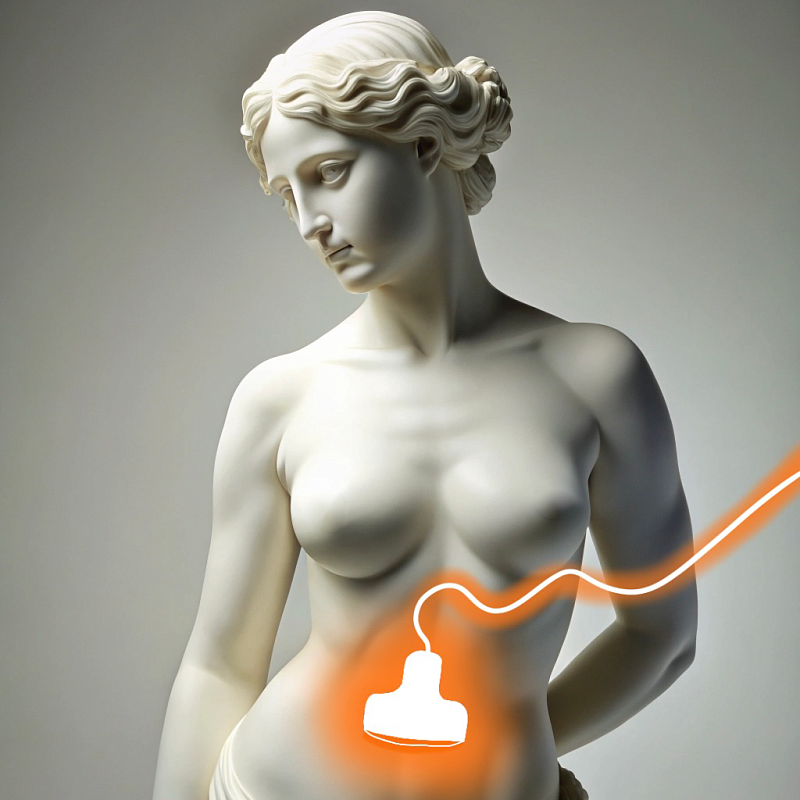Ultrasound of the kidneys and ureters
Ultrasound of the kidneys and ureters is a diagnostic study using ultrasound waves to visualize the kidneys and ureters, which allows you to identify stones, tumors, cysts, inflammatory and other pathological processes in these organs.

Kidney and ureteral diseases can be manifested by pain in the lumbar region, frequent urination, changes in the color and smell of urine, swelling and increased blood pressure. Ultrasound allows you to identify pathological changes in the early stages.
For ultrasound of the kidneys and ureters, it is advisable to drink 1-1.5 liters of water 1-2 hours before the study Exclude gas-forming products from the diet 1-2 days before the procedure Bring the results of previous studies, if any
The doctor applies a special gel to the area of study to improve the contact of the sensor with the skin. With the help of an ultrasound sensor, the doctor scans the kidneys and ureters, obtaining an image of the organs on the monitor screen. The doctor evaluates the shape, size, structure of organs and the presence of pathological changes.
An ultrasound machine with a high-frequency sensor and an image display monitor is used to perform ultrasound of the kidneys and ureters.
The patient receives the results of the study immediately. He can discuss them with the attending physician, who will prescribe further treatment or additional examinations.
Benefits
Safety
The procedure does not use ionizing radiation and has no contraindications.
Informative content
Ultrasound allows you to identify various pathological changes in the early stages.
Speed and convenience
The study takes 15-30 minutes and is performed on an outpatient basis.
Lack of special training
Preparation for the procedure is minimal and does not require complex actions.
Frequently Asked Questions
Is the procedure of ultrasound of the kidneys and ureters painful?
Is it possible to perform ultrasound of the kidneys and ureters for pregnant women?
How long does the procedure take?
Is it necessary to follow a diet before ultrasound?
How often do I need to undergo the procedure for preventive purposes?
In the absence of complaints and risk factors, it can be performed less frequently – once every 3-5 years.
Didn't find an answer to your question?
You can describe your problem in detail and ask a question to the doctor. He will answer you and help you find a solution
Врачи
Смотреть всех врачейUltrasound diagnostician, Candidate of Medical Sciences, Higher Qualifying Category Physician. Head of the Functional and Ultrasound Diagnostics department.
Ultrasound Diagnostics Doctor
Similar referral activities
Ultrasound of the joints
A diagnostic method that allows you to assess the condition of soft tissues, tendons, ligaments and cartilage structures of the joint. It is used to detect inflammatory, traumatic and degenerative changes in joints.
Ultrasound of the abdominal cavity
Ultrasound allows you to visualize internal organs such as the liver, gallbladder, pancreas, spleen, kidneys and other structures.
Ultrasound of the gallbladder
A study that allows you to assess the condition and functionality of the gallbladder, as well as identify pathologies such as stones, inflammatory processes and neoplasms.
Ultrasound of the musculoskeletal system
Ultrasound examination, which provides high-precision visualization of muscles, tendons, joints and bone surfaces, allows you to quickly identify injuries and diseases.
Ultrasound of the mammary glands
A diagnostic method that allows you to evaluate the structure of breast tissue and identify pathological changes. Suitable for women of all ages and health conditions.
Ultrasound of soft tissues
A study that allows you to assess the condition of the skin, subcutaneous fat, muscles, tendons, lymph nodes and blood vessels. It helps to identify inflammatory processes, hematomas, tumor formations and traumatic injuries.

